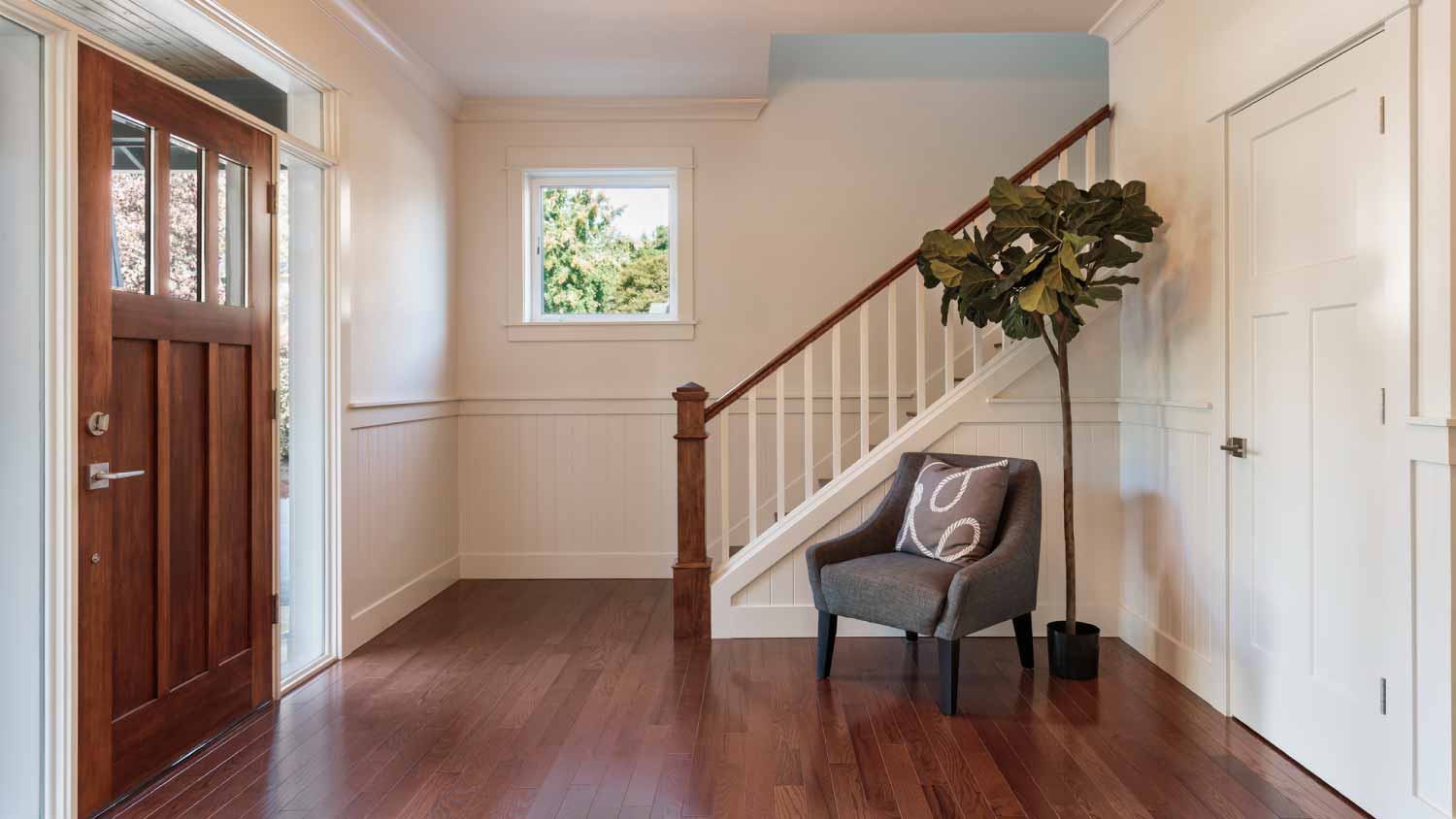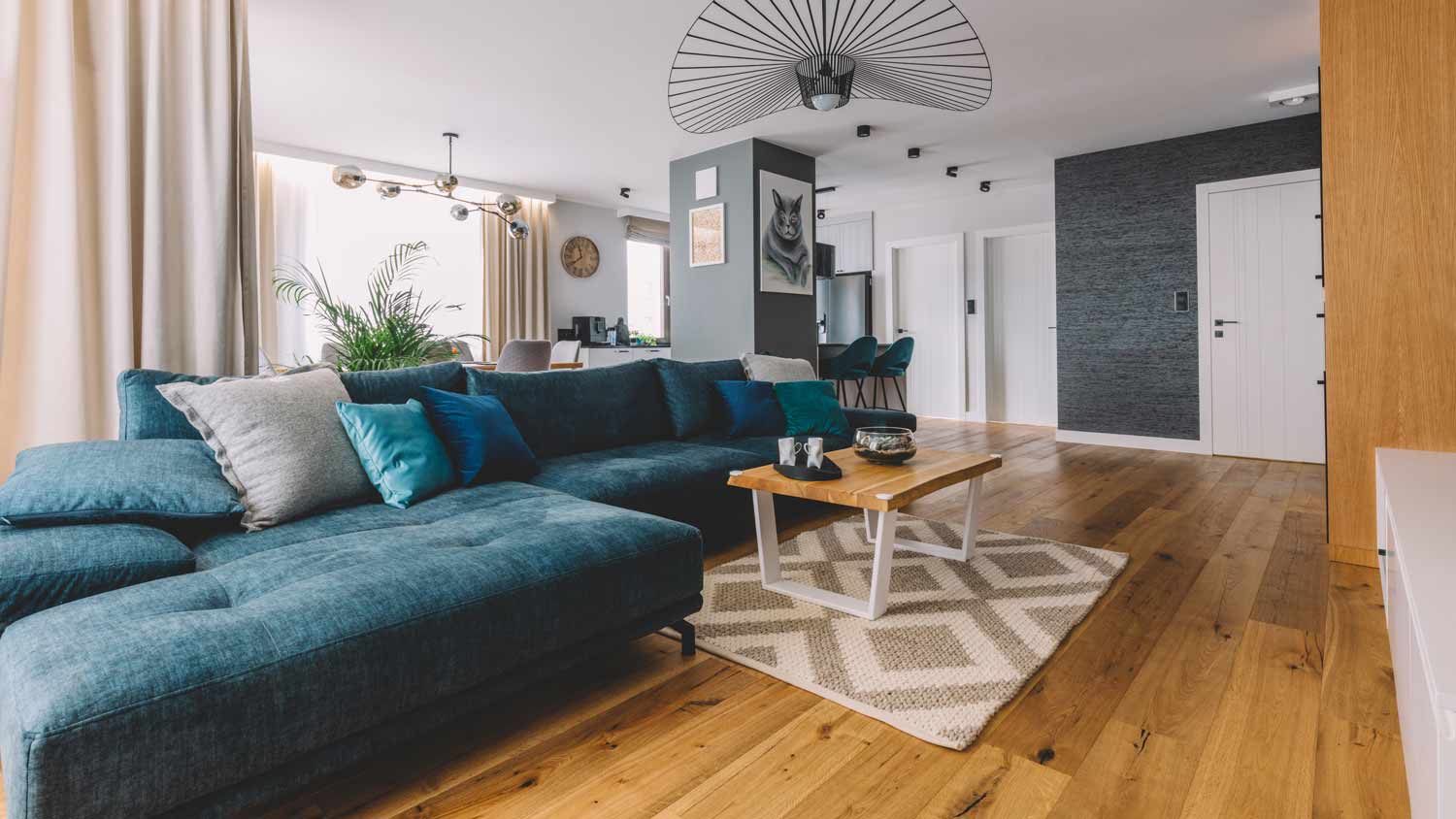Bathroom Tile Trends for Your Remodel
Choosing tile for your bathroom remodel? Combine trendy with timeless for a lasting design.


Jumping headfirst into the latest bathroom tile trend runs the risk of falling out of vogue, leaving the bathroom looking dated.
Since bathroom tile lasts 20 to 30 years — longer than bathtub surrounds or vinyl flooring — homeowners don’t need to update as often, says Carlos Martinez, first officer of C-Bek Tile & Stone Design in North Hollywood, California. So homeowners should consider a trend’s staying power when planning a bathroom remodel.
Bathroom tile color trends
Despite the number of flashy colors available, the standards still reign supreme. Minimizing bathroom tile colors doesn’t minimize options, says Kevin McDaniel, director of product design and development for The Tile Shop in Minneapolis.
“Grey, white and ‘greige’ colors continue to grow in popularity,” he says. “Low-contrast palettes with minimum coloration are still the predominant trend.”
Trendy porcelain tiles gain popularity
Porcelain tile catches the eye with its good looks and relatively low cost. Larry Bushner, owner of Masterpiece Tile & Grout in Arlington, Texas, has noticed more homeowners requesting porcelain tile.
“This can look like stone without the additional costs of installation, purchase price and maintenance,” he says, adding porcelain tile costs slightly more than ceramic tile.
Porcelain faces no shortage of style either, Martinez says. Besides the stone look, manufacturers are creating contemporary and classic product lines in porcelain, which doesn’t stain like other bathroom tile types, he says.
“They’re getting so good at [manufacturing] porcelain,” Martinez says. “That’s why it’s popping right now.”
McDaniel says The Tile Shop has seen increased demand for porcelain, and the company will release a line of Travertine Ivory porcelain tile early next year. However, with stone’s classic appeal and certain glazing techniques only possible with ceramic tile, those two won’t disappear, he says.
Trendy glass tile becomes a staple
Glass tile has proved its staying power, becoming a timeless classic in its own rite, according to McDaniel. Now, designs that combine glass with other materials are gaining momentum, he says.
“Newer water-jet technology allows for unique shapes, sizing and combination of materials that was unthinkable a few years ago,” he says.

Angie’s List member A. Weiss of Skokie, Illinois, chose 3-by-9-inch blue glass tile for the top half of her bathroom walls to accent the main 12-by-24-inch porcelain tile.
Weiss researched a plethora of tile options online before beginning the modernizing master bathroom remodel, which features a large corner tub and shower with glass walls. She and her husband needed to replace moldy, flaking-beyond-help slate tile in the shower, installed before they bought the house.
“We have a transitional/modern style for the most part, so we wanted clean lines and a bit of a spa feel,” Weiss says. “Having done a lot of research online, we decided on a glass and porcelain look.”
Weiss visited showrooms and consulted with the in-house designer for her contractor, Neighborhood Remodelers in Park Ridge, Illinois. Not counting labor, the tile materials, including grout and caulk, cost $1,775.
Recent bathroom tile trends
Installing faux wood tile on shower walls has recently grown into a popular bathroom tile trend, according to McDaniel.
“The thought of having wood inside of a wet area is a completely novel idea, and homeowners and designers are widely embracing it,” he says.
One trend McDaniel debunked is the death of multi-tile patterns. Patterns offer a classic, traditional look, he says, even if they don’t fit some homeowners’ modern tastes.
“As some homeowners embrace a more contemporary look, designs have become cleaner, with more emphasis placed on the use of a single material throughout one or more spaces,” he said. “Accents, if used, tend to be limited to one dramatic focal point.”
Planning a bathroom remodel? Share your bathroom tile pairings and design ideas in the comments section below!
Editor's note: This is an updated version of an article originally published on Nov. 2, 2016.

.jpg?impolicy=leadImage)



- Ceramic Tile Flooring Pros and Cons: Could This Be the Tile of Your Dreams?
- What Is the Best Tile for a Kitchen Floor?
- What Is the Best Tile for Bathroom Floors?
- Porcelain vs. Ceramic Tile: Which Is Best for Your Home?
- Who Should I Hire to Install Bathroom Tiles?
- How to Cut Glass Tile Safely and Without Shatter
- The Pros and Cons of Tile Roofs
- How Long Does Tile Flooring Last?
- How to Cut Tile Step by Step
- 8 Smart Ways to Update Your Bathroom Tile Without Replacing It









